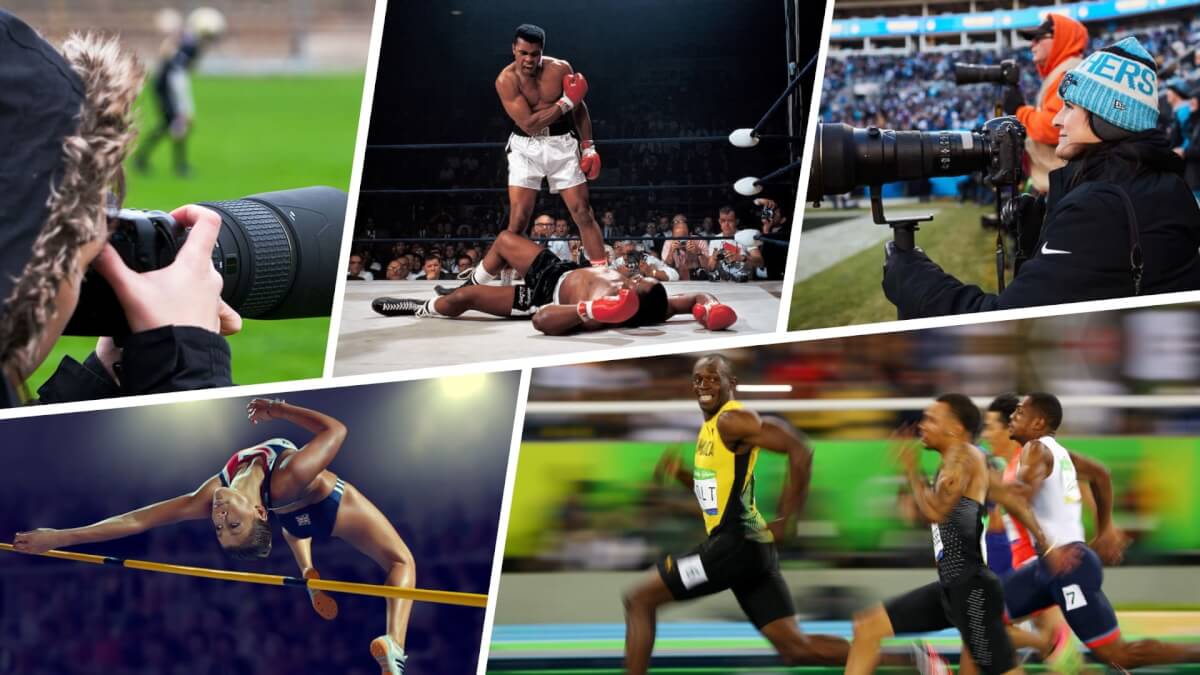So you want to be a sports photographer. Awesome! Sports photography is how we capture sports – but it’s also something more than that. Sports photography is an artistic medium for artists to express how they see the world of sports. We’re going to break down step-by-step how to shoot sports images, with camera tips and location tricks. By the end, you’ll be ready to shoot action sports photography of your own.
Sports Photography Tips: #1
Know your camera
The maxim “be prepared” should be heeded for everything in life, not just sports photography. But in the case of sports photography, it’s especially pertinent. There are two things you need to be prepared for in action sports photography: the first is the sport and the second is the photography. It may sound trite to say that but it’s true. We’re going to cover the “sport” aspect of sports photography later, but first let’s talk about the camera.
If you want to be a sports photographer, you need to know how to use a camera. So how do you use a camera? Well, we start with the exposure triangle. The exposure triangle is the process through which the camera captures light through aperture, shutter speed, and ISO. Let’s break down the three elements of the exposure triangle in greater detail.
APERTURE
Aperture is the opening of a camera lens through which light passes. In the sports pictures game, your success starts and ends with your knowledge of the various camera and lens settings. The aperture is one of these key components.
In this video guide, we've detailed the various storytelling benefits of the aperture, which can help you decide on the best lens for sports photography.
What is Aperture? • Subscribe on YouTube
SHUTTER SPEED
Shutter speed is the length of time for which an image is exposed to light. To get a full understanding of the best shutter speed for sports photography, we need to know how shutter speed works. Here's an explainer video to lay out the basics of how critical this camera setting is in a sports photoshoot.
What is Shutter Speed? • Subscribe on YouTube
ISO
ISO refers to the how the camera sensor "processes" the light hitting it. In the old days, shooting on celluloid, ISO measured the film stock's sensitivity to light. Today, with digital sensors, it measures how much the "boost" the light is given, similar to a volume knob on a stereo.
The lower the ISO number, the less amplification the sensor gives to the light and vice versa. For sports images, ISO comes in to play if you're shooting a night game (to amplify the light signal) or a midday outdoor game (to decrease the light). Here's another tutorial on how ISO works.
Best Camera for Sports Photography Beginners • What is ISO • Subscribe on YouTube
If you know the exposure triangle and how to maximize its components – aperture, shutter speed, and ISO – then you’re already on your way to becoming a great sports photographer. Consider reading our guide to camera lenses to learn more about sports photography lenses.
For a more thorough explanation of exposure and how these settings work in combination, download our FREE Ebook — The Ultimate Guide to Exposure. Now all you need to know is how to shoot sports. Let’s jump into some sports photography tips!
Free downloadable bonus
FREE Download
Ultimate Guide to Exposure
The Exposure Triangle is something every photographer and cinematographer needs to master. Download our FREE e-book to get in-depth explanations and tutorials on topics like aperture, ISO, shutter speed, and how to balance these settings to nail perfect exposure every time.
Sports Photography Tips: #2
Know the sport(s)
One of the most difficult aspects of action sports photography is having to know all of the different action sports you’re going to photograph. Say that three times fast!
Why do you need to know different sports? Well, you need to know sports to know where, what and when to shoot.
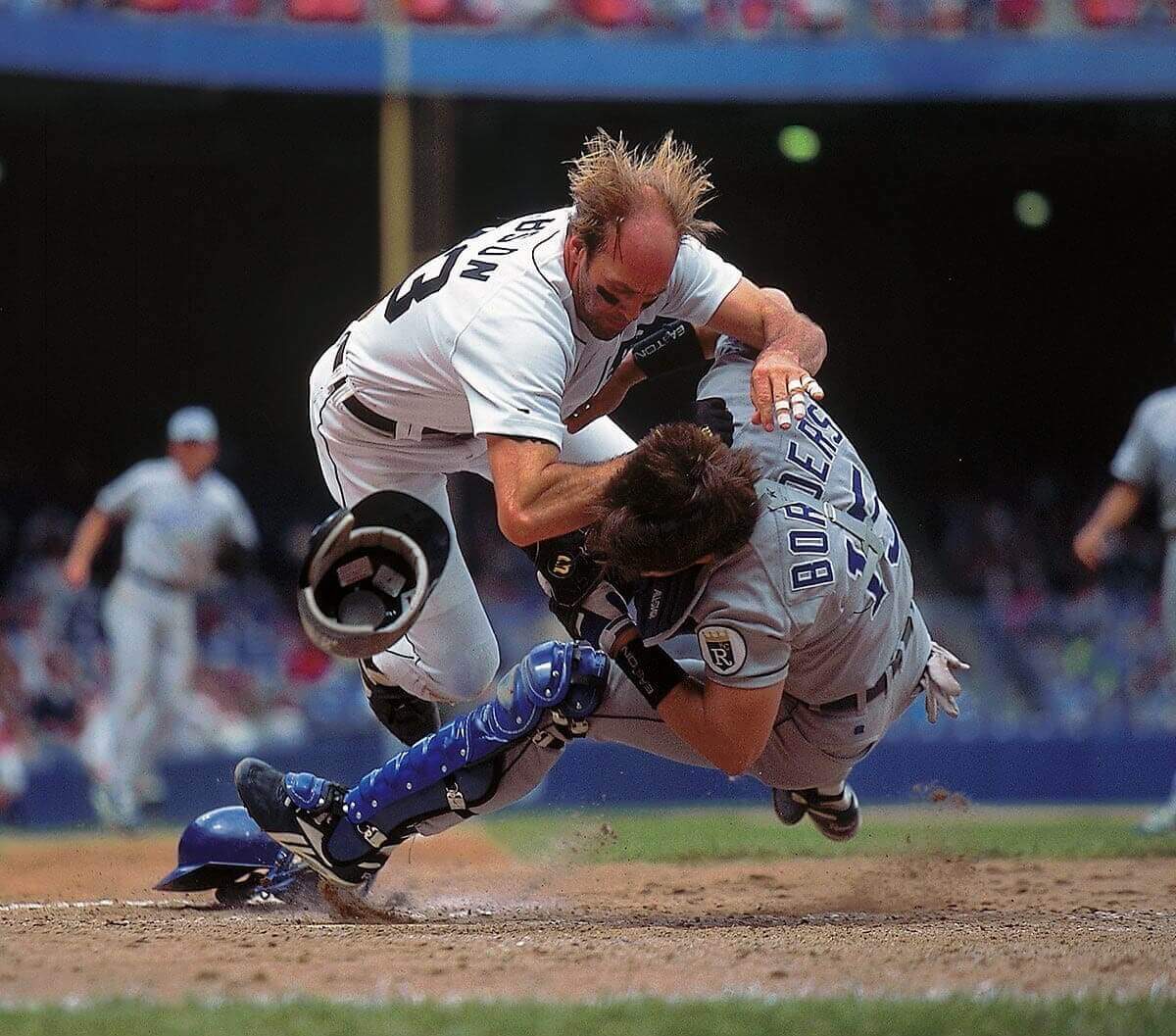
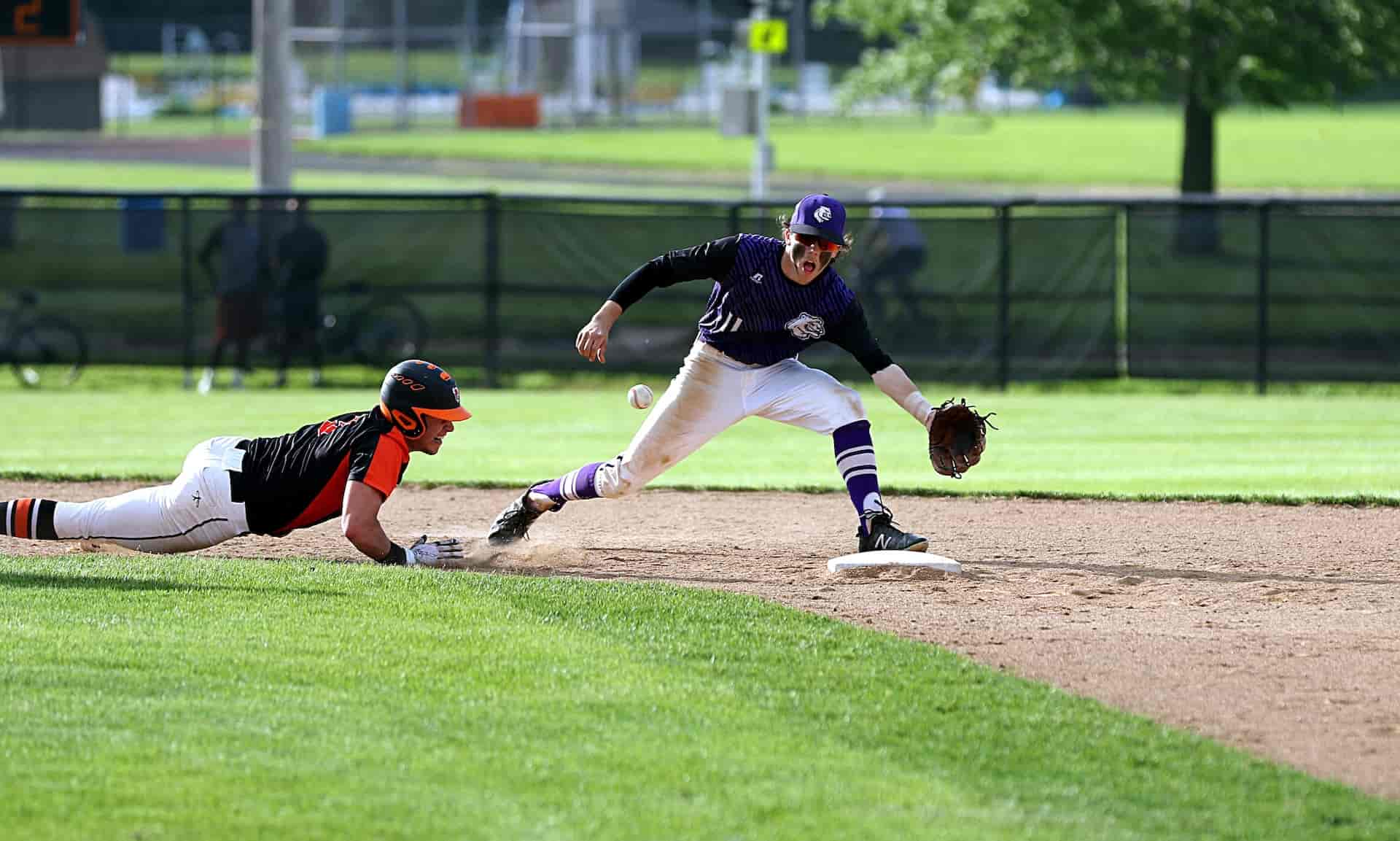

Baseball player attempts to catch ball • Sports photography
Baseball is a perfect example — it may seem like nothing happens on the baseball diamond, but if you know where to look, there’s almost always something interesting happening. It’s your job as a sports photographer to capture that moment of interest.
Sports Photography Tips: #3
Get permission
If you’re just getting started with sports photography, chances are you’re not going to be taking photos at Madison Square Garden. So your best bet is to start shooting at local sporting events. But before you break out your camera equipment, you should consider doing these three things:
- Contact the school/organization’s athletic office
- Ask where you’re allowed to set up your equipment
- Communicate with athletes directly
That last point should be reserved for situations in which there isn’t a school or organization athletic office. But the point is that it’s always a good idea to get permission. The last thing you want is for your "one-in-a-million" shot to be blocked by permission or image rights issues from the athletes.
Sports Photography Tips: #4
Work with athletes
Athletes want to improve their craft just like sports photographers do. Oftentimes, it’s in the best interest of both parties to work together – the athlete gets great promotional material, and the photographer gets to practice their skills.
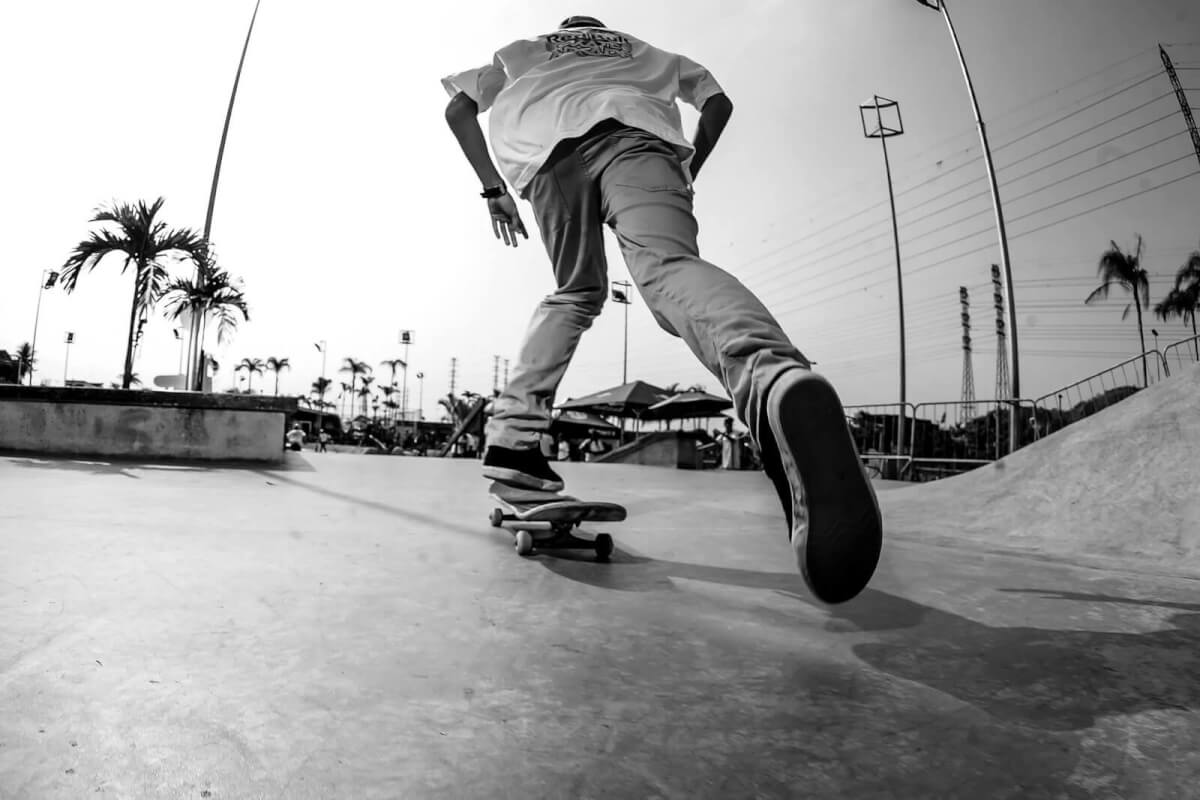
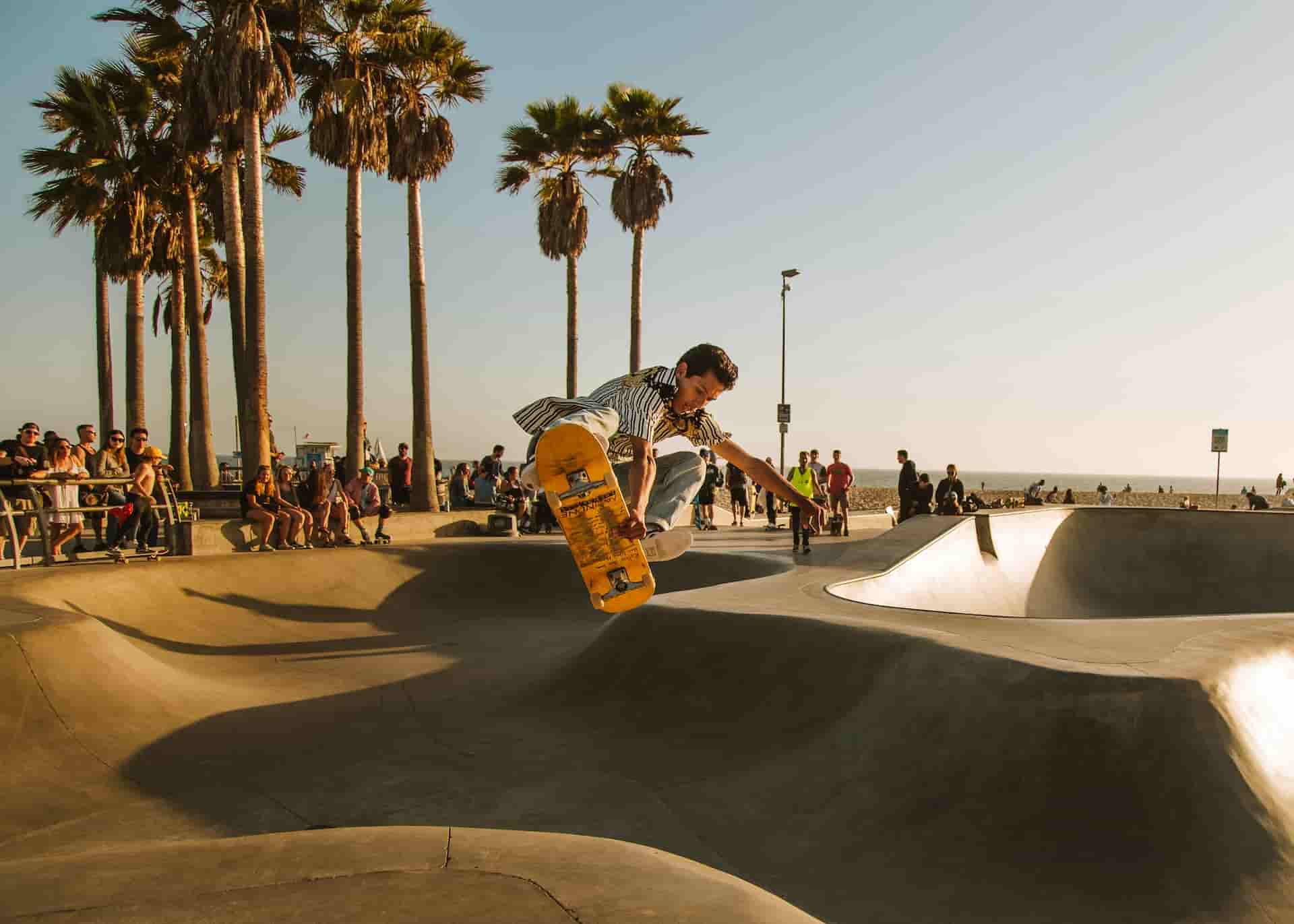

Great Sports Pictures • A Skater on Skate Ramp
If you don’t know any athletes, then go to a public sporting area and ask if anybody’s interested in getting photographed. Tip: tell them you’ll send them the photos and follow through with it.
Sports Photography Tips: #5
Capture the action
Check out this striking photo of LeBron James celebrating with arms raised after a play. The image captures the peak of triumph set against a roaring crowd and a referee nearby.
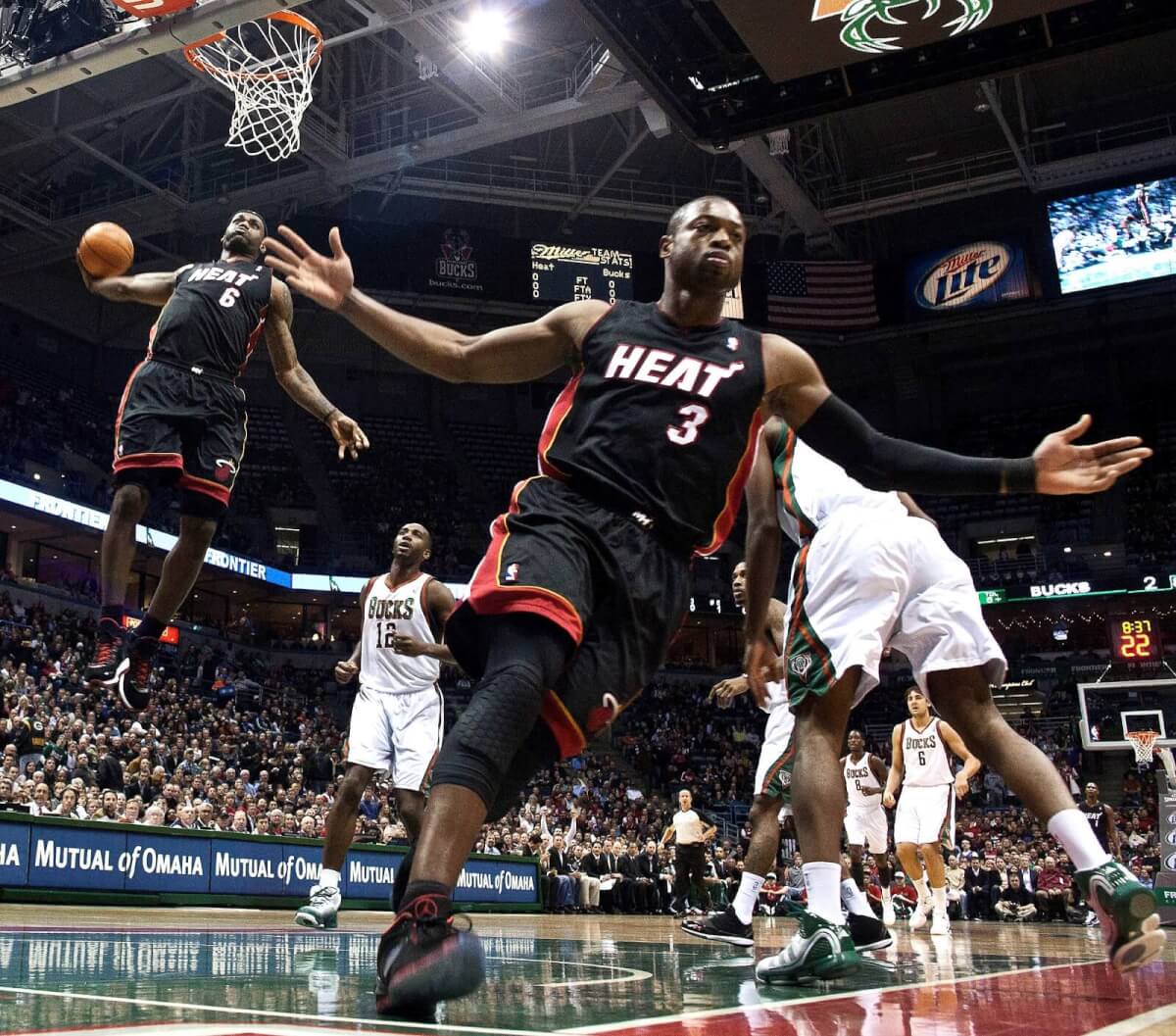
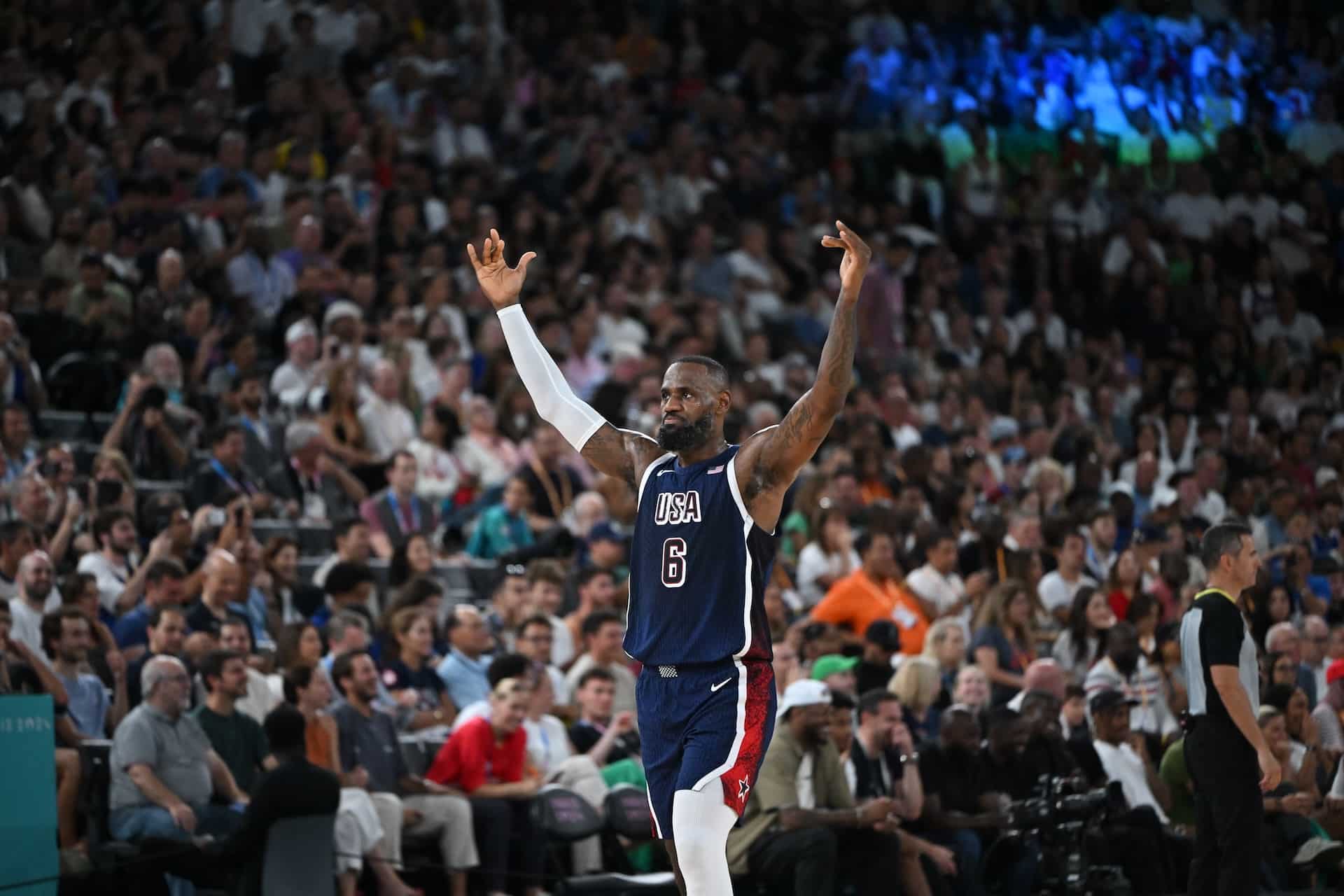

LeBron James Celebrating a Shot • Sports Photography
Timing is key to freezing these emotional highs, making it a must-know technique for dynamic sports photography.
This is just one example of knowing where to capture the action. Nowadays, most NBA photographers are relegated to the baseline. Other sports allow their photographers to capture the action from a myriad of camera angles.
Anticipate where the action is going to occur and set up your angle accordingly.
Sports Photography Tips: #6
Capture the emotion
In the heat of a triathlon, athletes push their limits with unwavering resolve. This image of a runner from Club TriGranada showcases the intense focus and determination etched on their face, set against the scenic backdrop of the beach. A perfect moment to capture the raw emotion and grit of the sport.
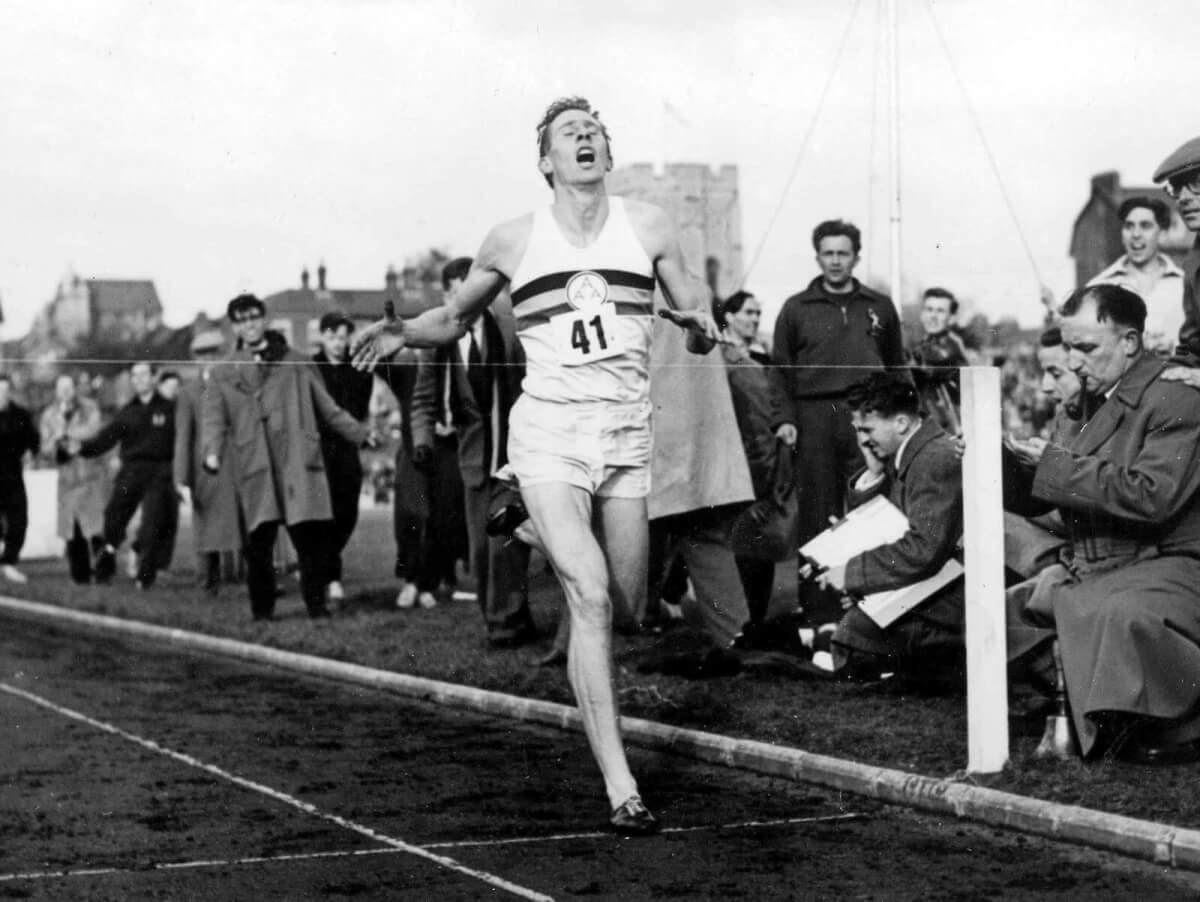
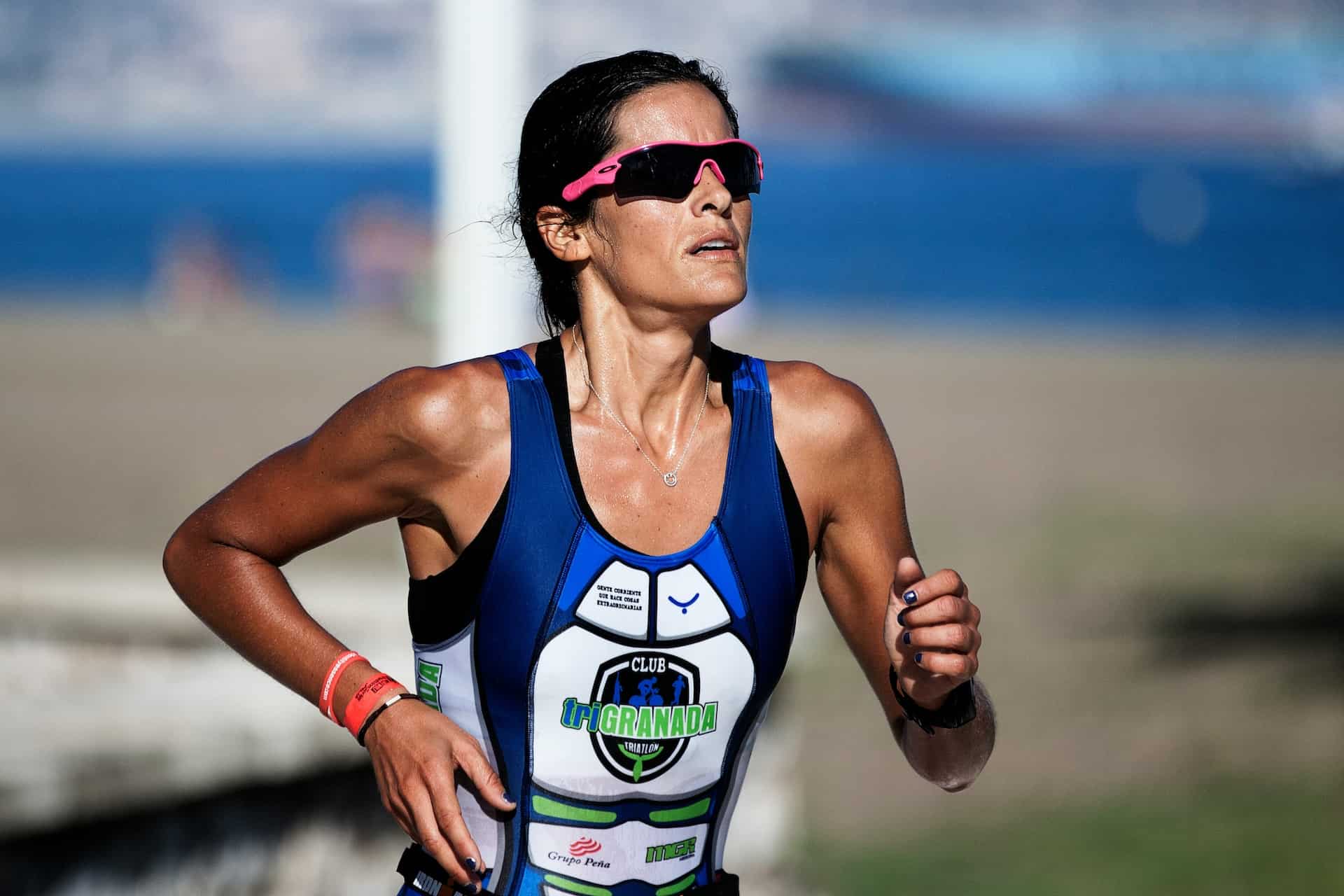

Triathlon runner powers through with determination. • Sports photography
What can we learn from this photo of a runner? It highlights the power of capturing an athlete's emotion alongside their performance. Often, the expression on their face reveals a deeper narrative than the physical action alone.
Sports Photography Tips: #7
Capture the detail
In sports photography, the smallest details can elevate a shot, from the grip on a football to the intensity in a player's stride. This image of a running back showcases the importance of capturing intricate moments, even at a local game – and if you need any guidance check out our article on How to Choose the Right Camera Lens.
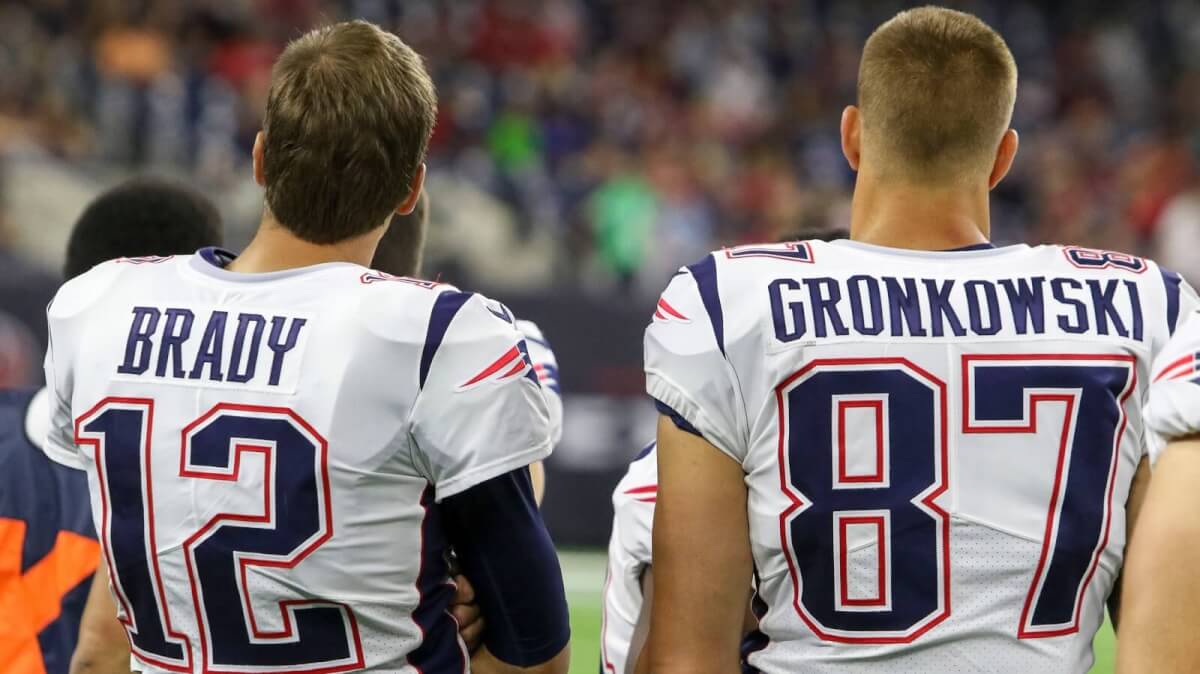
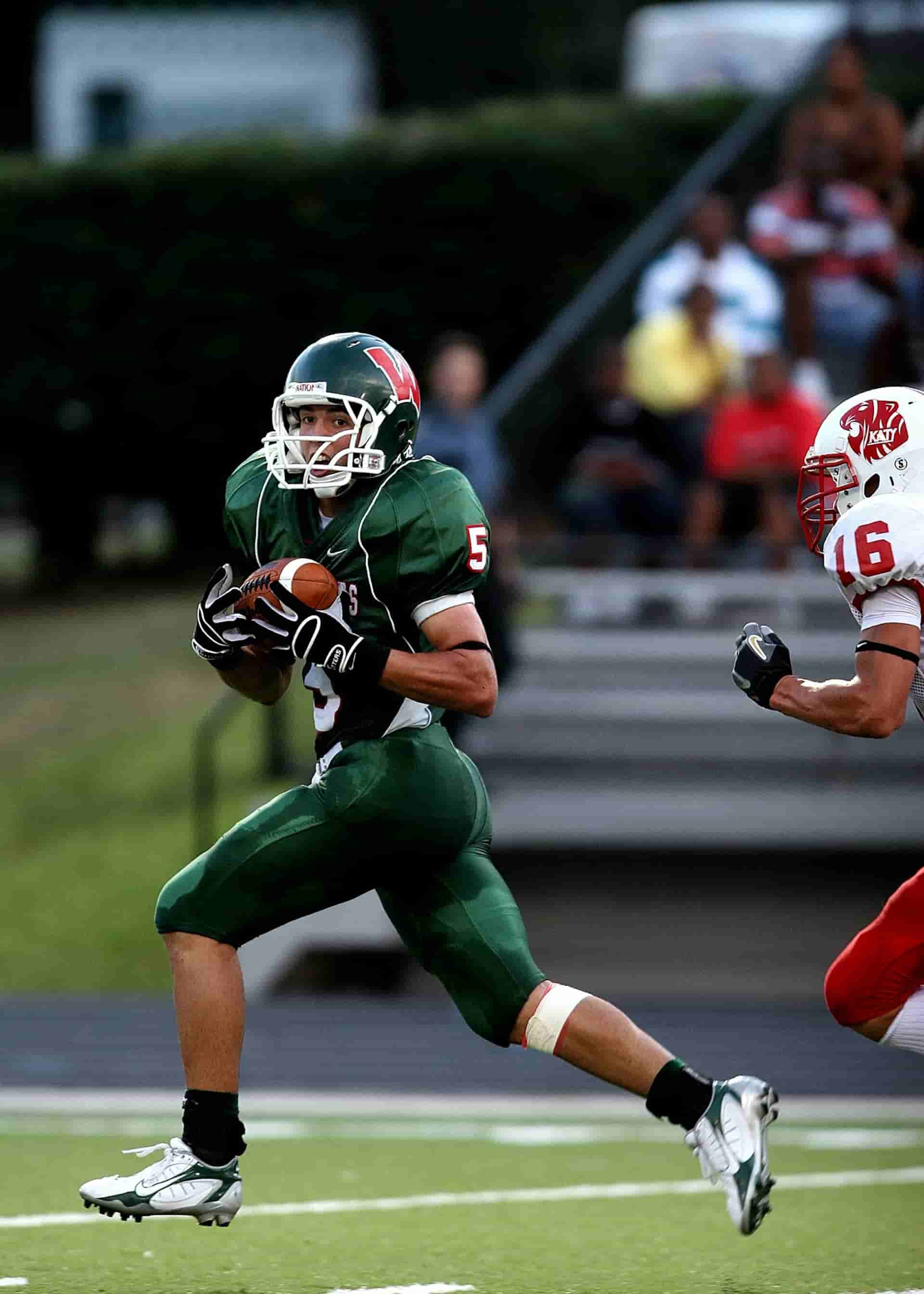

Running back charges forward during a game • Football photography
You don’t need to be this close to the action to capture awesome detail in sports photography. Detail can be found at your local race track, outdoor basketball court, or college baseball diamond.
Sports Photography Tips: #8
Follow the story
One of the best things about sports is that they have the power to unify us against obstacles and show us insight into critical moments of our past. Perhaps no sports photograph is more indicative of these two perspectives than this — Jesse Owens receiving a gold medal for Long Jump at the 1936 Olympics while Luz Long and thousands of others give Adolf Hitler Nazi salutes.
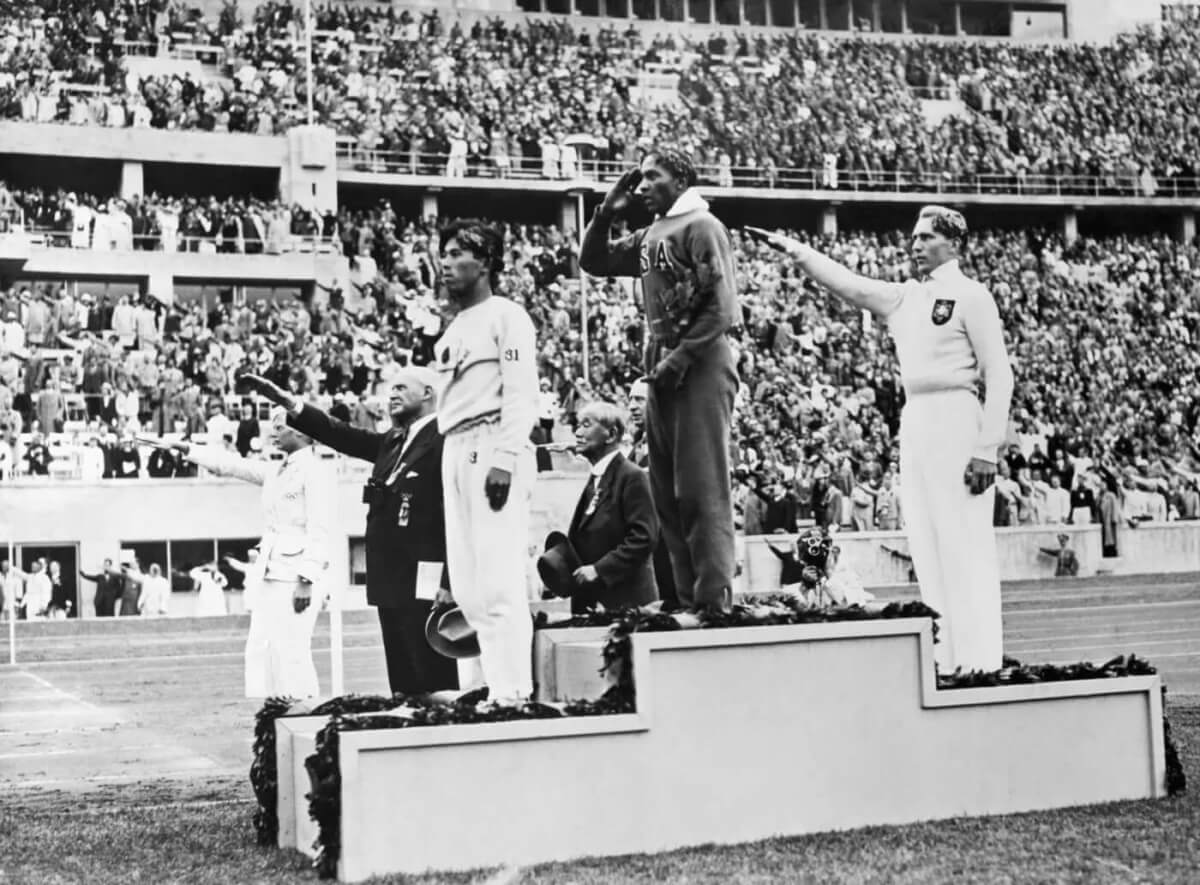


Jesse Owens winning the gold • Photo Bettmann Archive/Getty Images
This example shows us that sometimes you just have to be in the right place at the right time to shoot an iconic sports photograph. This photo is overexposed and even a little blurry — but the story it tells is simply incredible.
Sports Photography Tips: #9
Change perspectives
Think about any sport — let’s use basketball as an example. What angle are most basketball photos taken from? Overhead? Wide? No, they’re taken from the baseline facing up at the players.
This overhead view of a game offers a fresh perspective, showcasing the court layout and player movements from above. The unique angle highlights the dynamics of the game, making it a striking and uncommon sports photograph that captivates viewers.
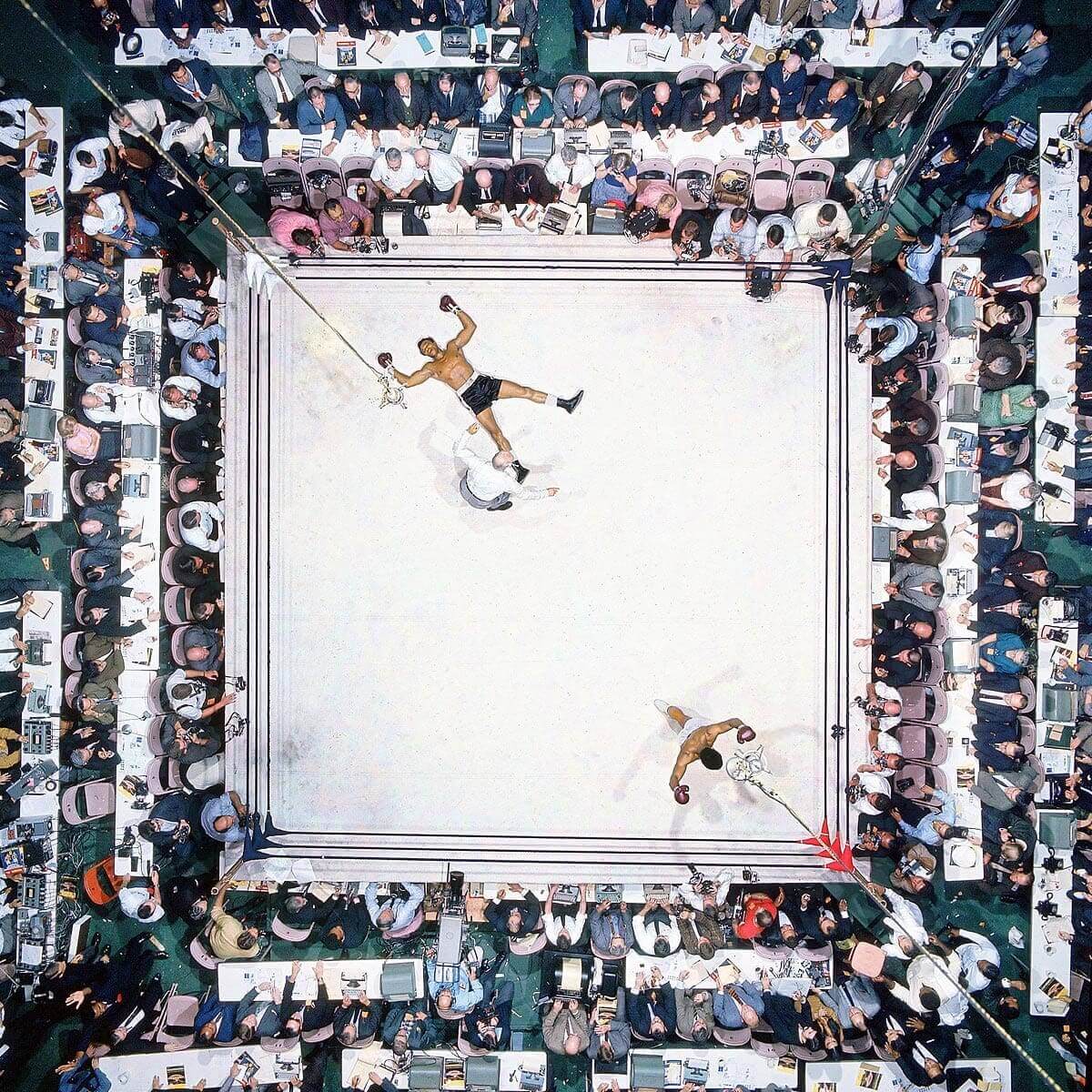
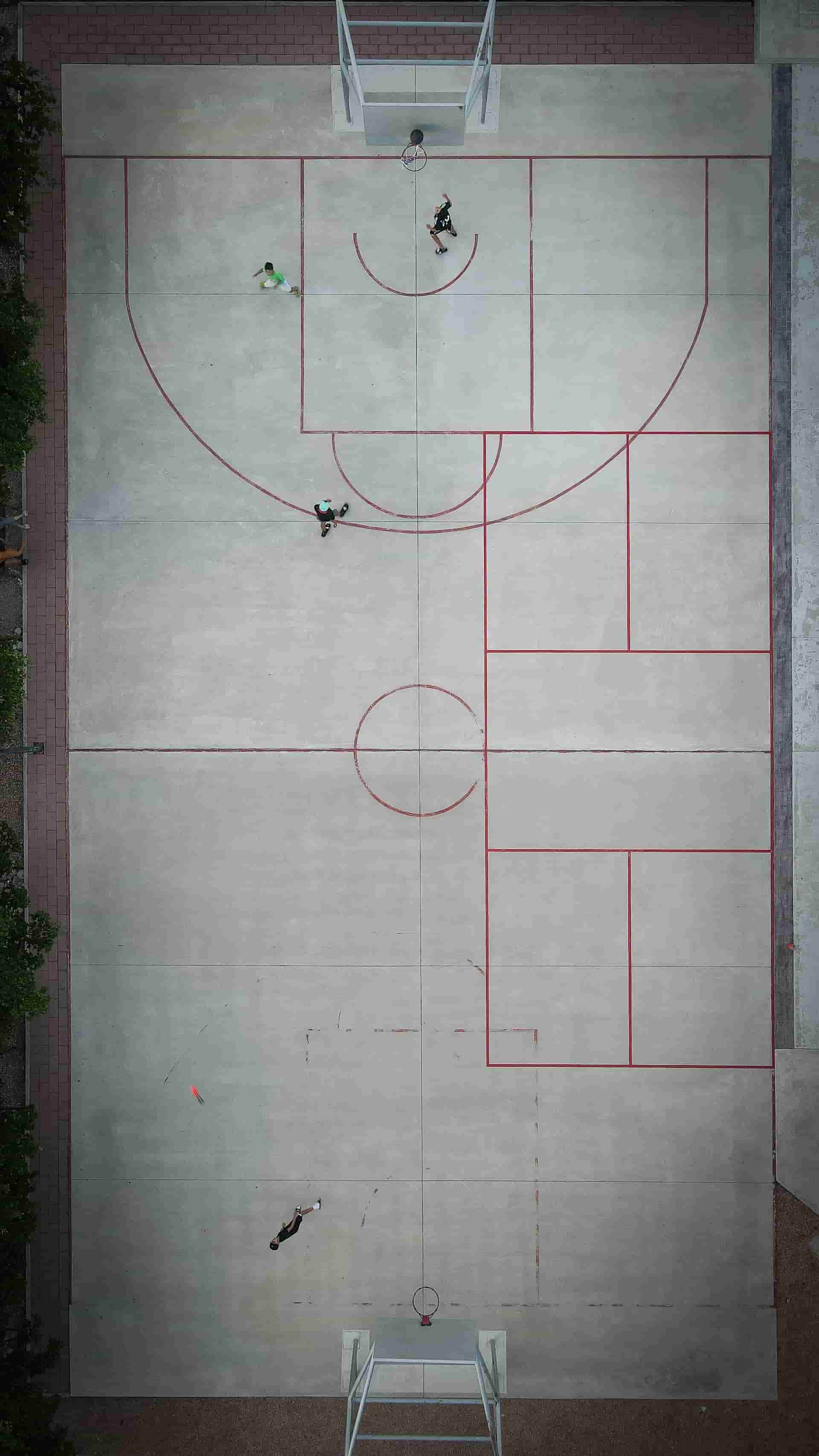

Muhammad Ali Stands Victorious After Knocking Out ‘Big Cat’ Williams • Neil Leifer
This is a captivating sports photograph for several reasons, primarily due to its unique overhead perspective. How often do you see a basketball game captured from this angle? Likely not often, making this top-down view of the players and court an exciting and fresh visual experience.
Sports Photography Tips: #10
Layer your composition
Visual composition is how an image is put together or composed. A well-composed image is something that we usually call aesthetically-pleasing — some visual artists will tell you there's science to great composition, but I’d suggest you know it when you see it.
Take this next golf sports photograph for example and consider the composition:

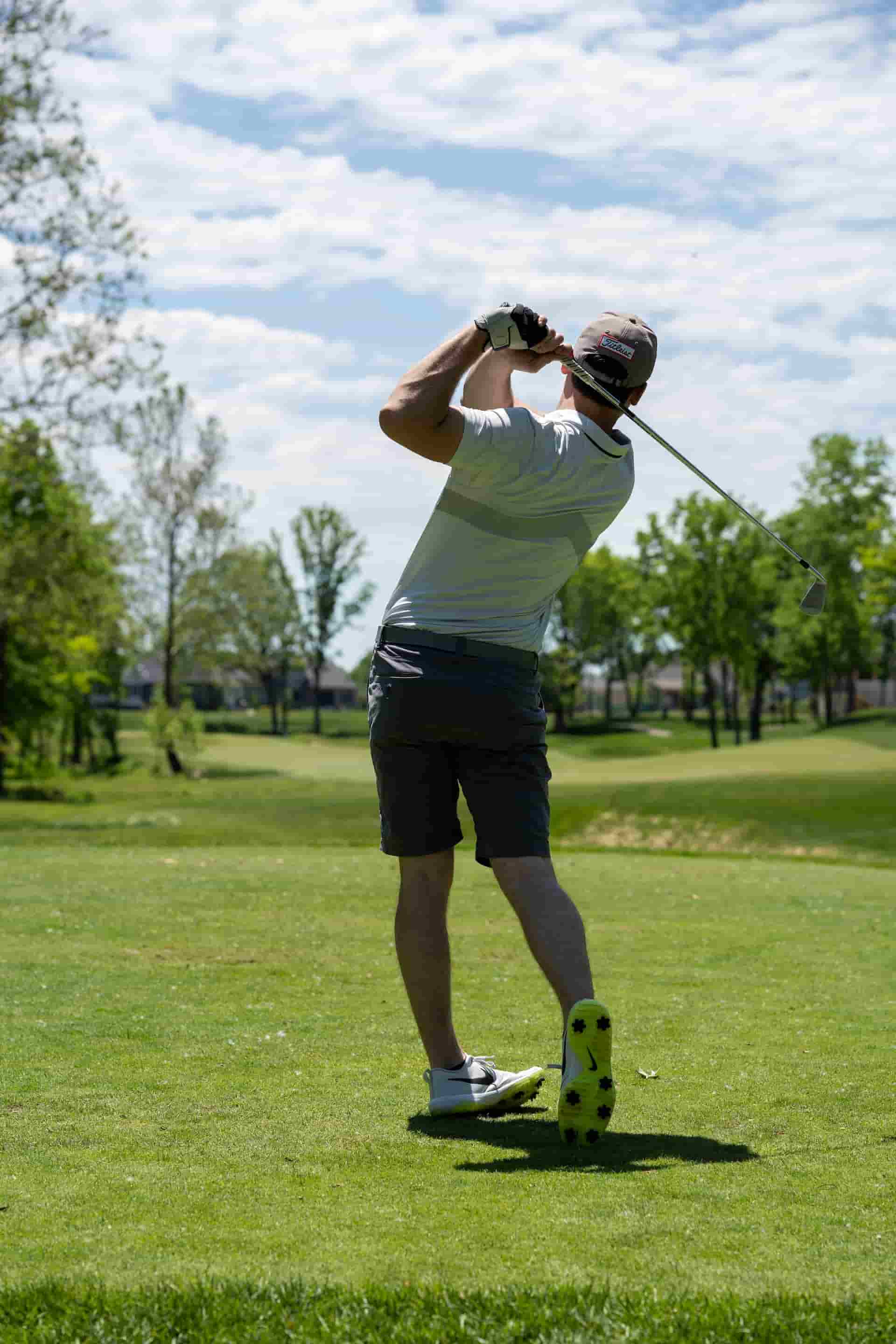

Tiger Woods Tees Off at The Masters • Fred Vuich
This is a masterfully composed photo. Why? Well, look at the lines. The green fairway draws the eye forward, framed by trees that subtly close off the top, while the golfer’s mid-swing pose adds dynamic focus.
You don’t need to be at The Masters to shoot a photo like this but you do need to be a master of the craft.
Sports Photography Tips: #11
Consider color
Color theory in photography is a valid consideration and also plays a huge role in sports photography for two reasons: it makes an image standout and it gives it character. Take this photo of the U.S. Women’s National Soccer Team Captain Megan Rapinoe, for example:
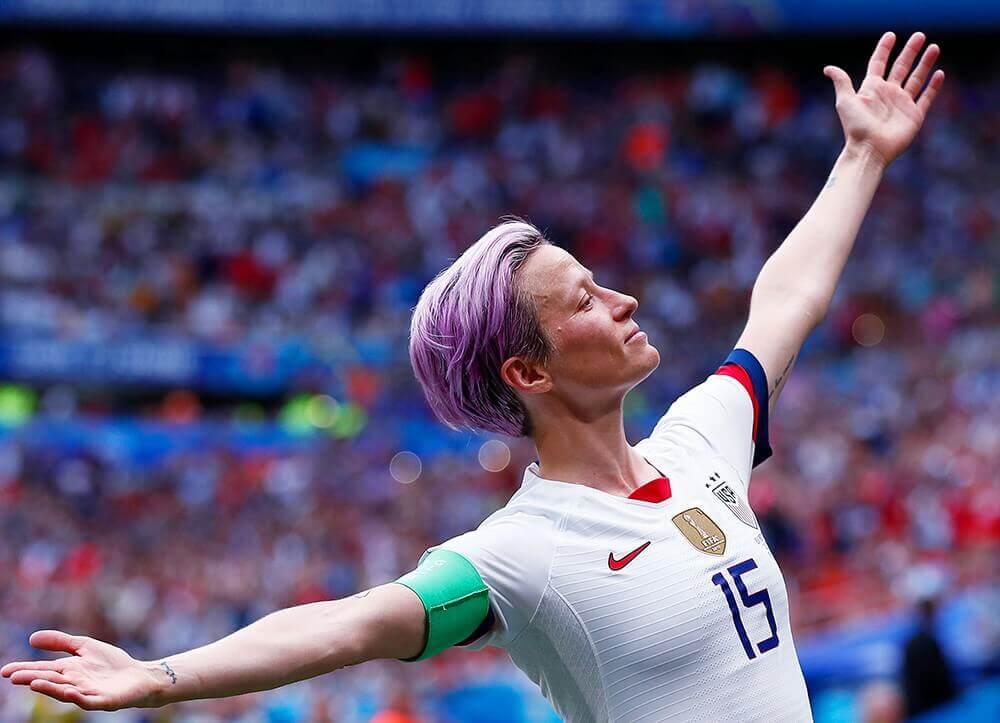


U.S. Team Captain Megan Rapinoe Celebrates a Goal • Soccer Photography
Look at all of the different colors in the frame: emerald, fuschia, red, blue, and gold to name a few. Ultimately, the color makes this an eye-catching sports photograph.
If you're interested in a deep dive into color theory, we've got another FREE Ebook on everything you need to know.
Cinematography techniques pdf
FREE Download
How to Use Color in Film
Hue, saturation, brightness — the three elements of color that make all the difference. In this book, we'll explain the aesthetic qualities and psychology effects of using color in your images. Topics include color schemes like analogous and triadic colors and how color palettes can tell stories of their own.
Sports Photography Tips: #12
Go behind the scenes
The most compelling stories at a sporting event often unfold off the field, and this image from the Opening Day of the 1961 baseball season captures that perfectly. Featuring President John F. Kennedy throwing out the first ball, with Vice President Lyndon B. Johnson and a vibrant crowd in the foreground, the photo reveals the excitement and characters beyond the game.
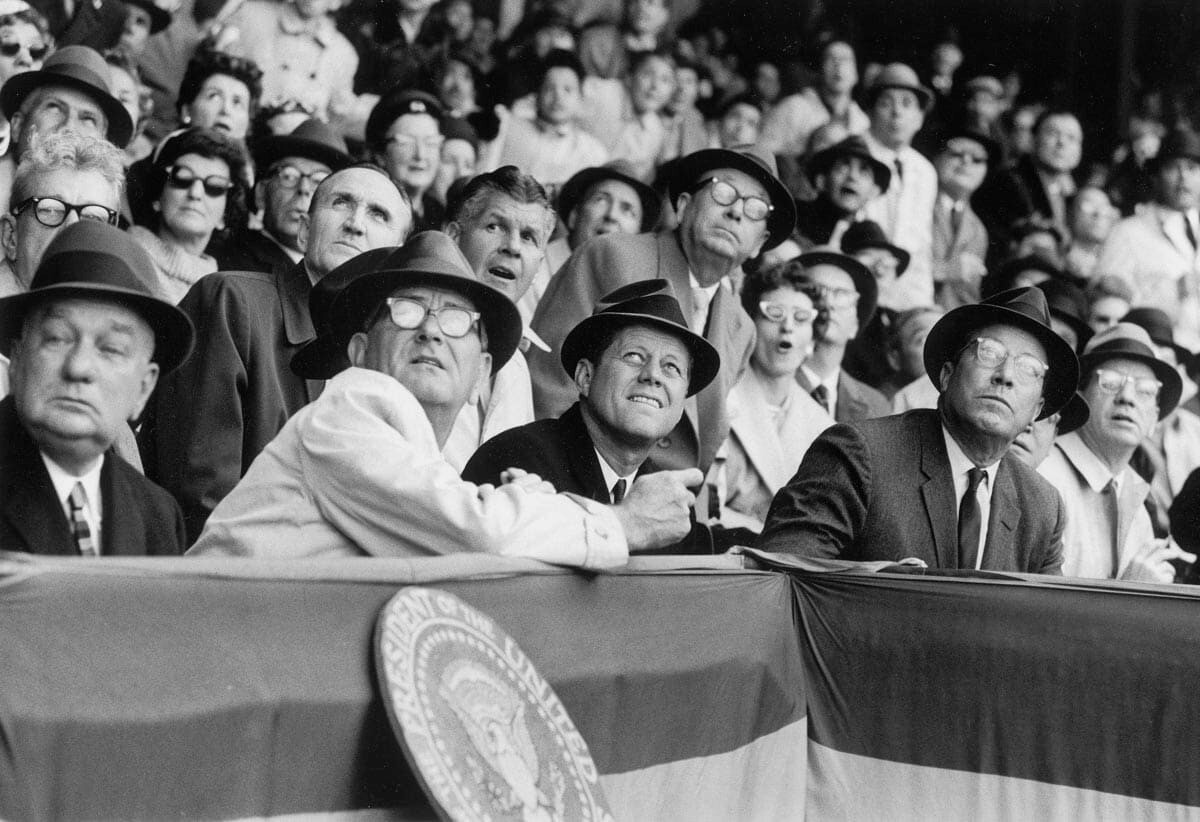
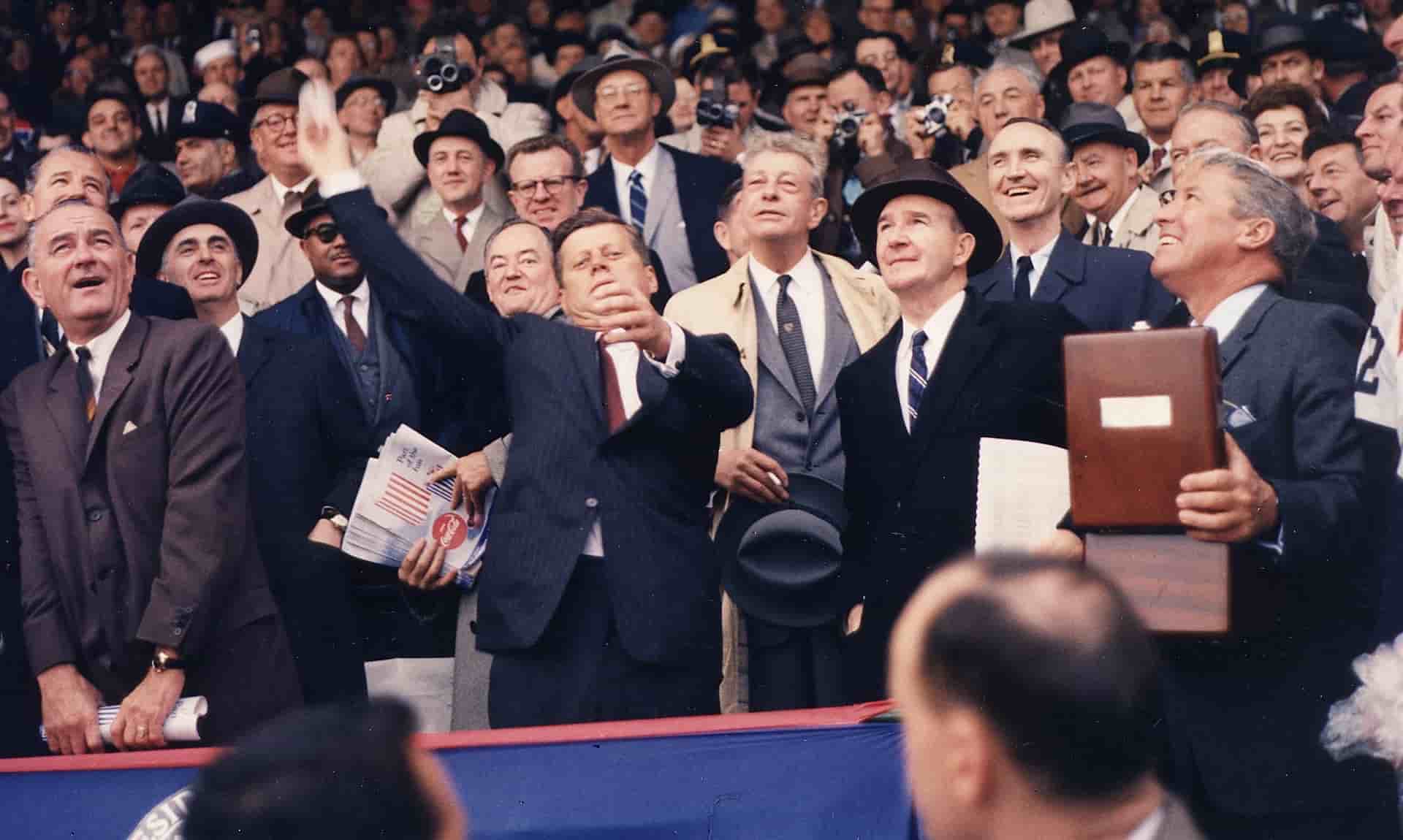

President Kennedy throws the first ball on Opening Day 1961 • Sports photography
The diverse expressions and gestures of the onlookers, some holding programs and a box, add depth. Your task as a photographer is to seek out these intriguing moments amid the crowd.
Sports Photography Tips: #13
Get into the thick of it
The best sports images don’t just show us what happened — they throw us into the moment. Take this shot of a baseball player sliding into base, frozen mid-impact as dirt explodes around them. You can feel the grit, the speed, the sheer urgency of the play.
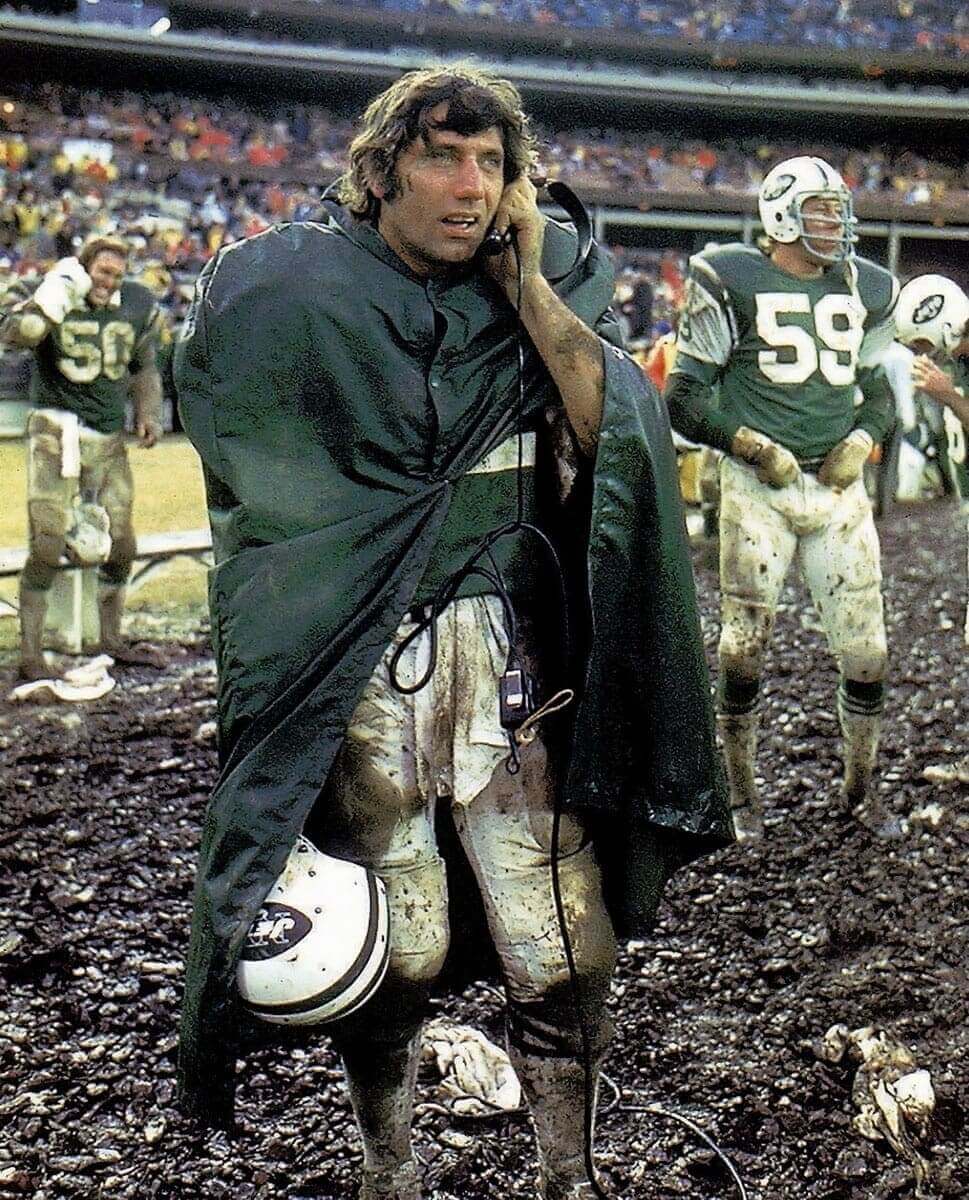
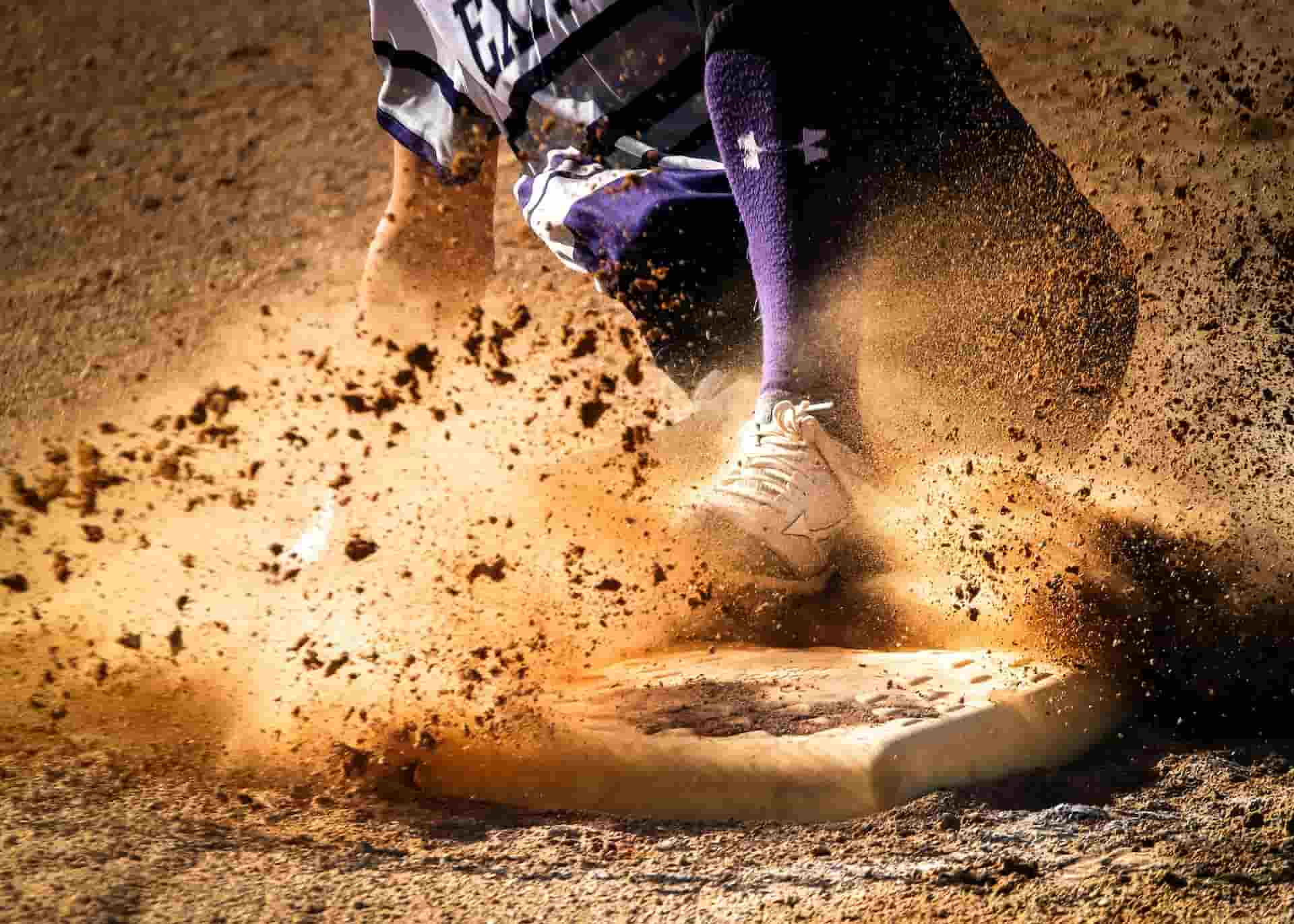

Sliding into base in a cloud of dust • Sports Photography
Notice how tight the frame is — you’re not watching from the bleachers, you’re in the dust cloud. This is the beauty of embracing the chaos. Shooting sports means embracing the mess, the motion, and the moments in between. So get low, get close, and don’t be afraid to get your lens a little dirty.
Sports Photography Tips: #14
Go out and do it
Our last tip is the most simple yet important advice we can give: go out and do it. Nobody became a great sports photographer overnight. Every great sports photographer practiced and practiced until they became great — just like the athletes themselves.
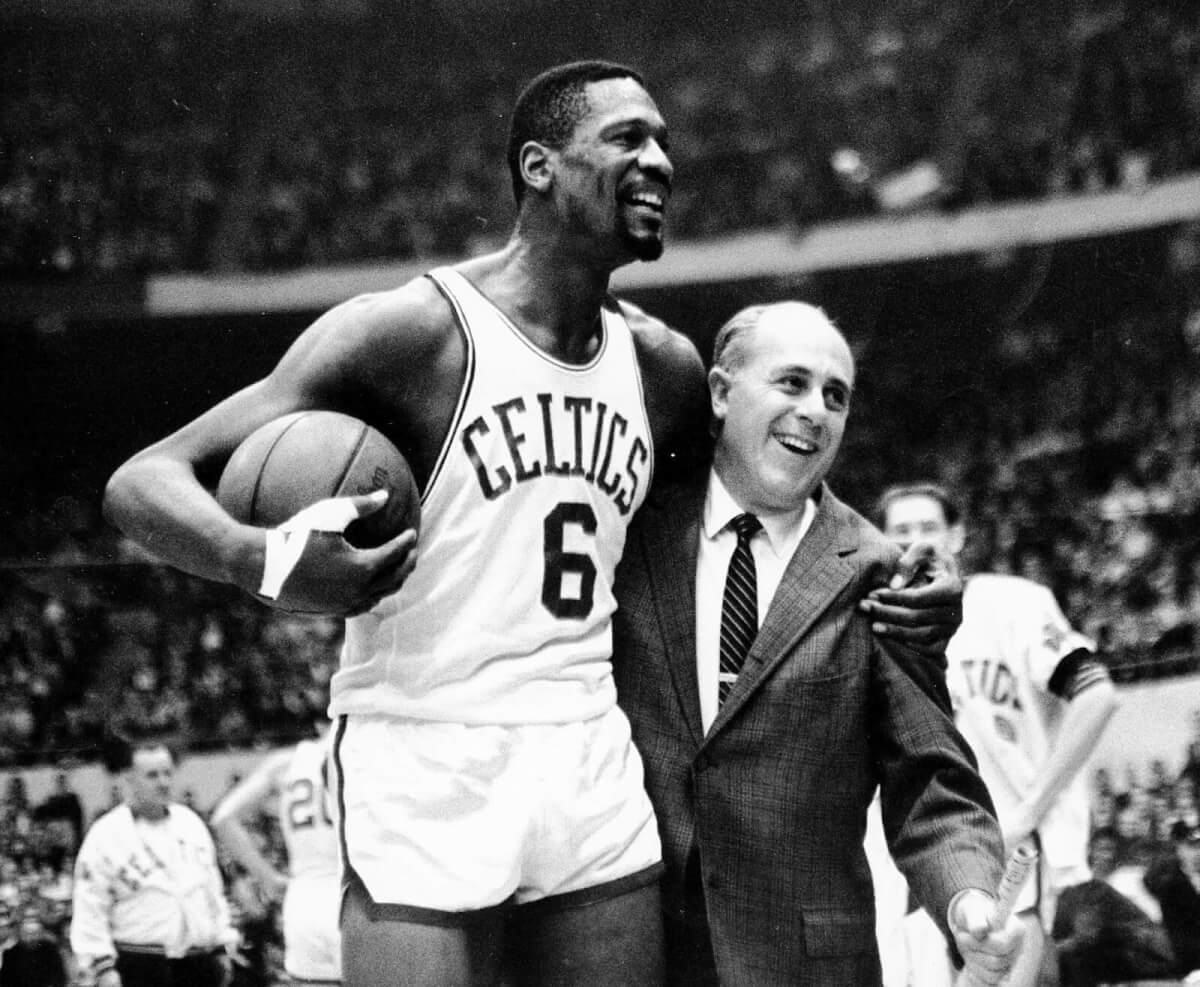
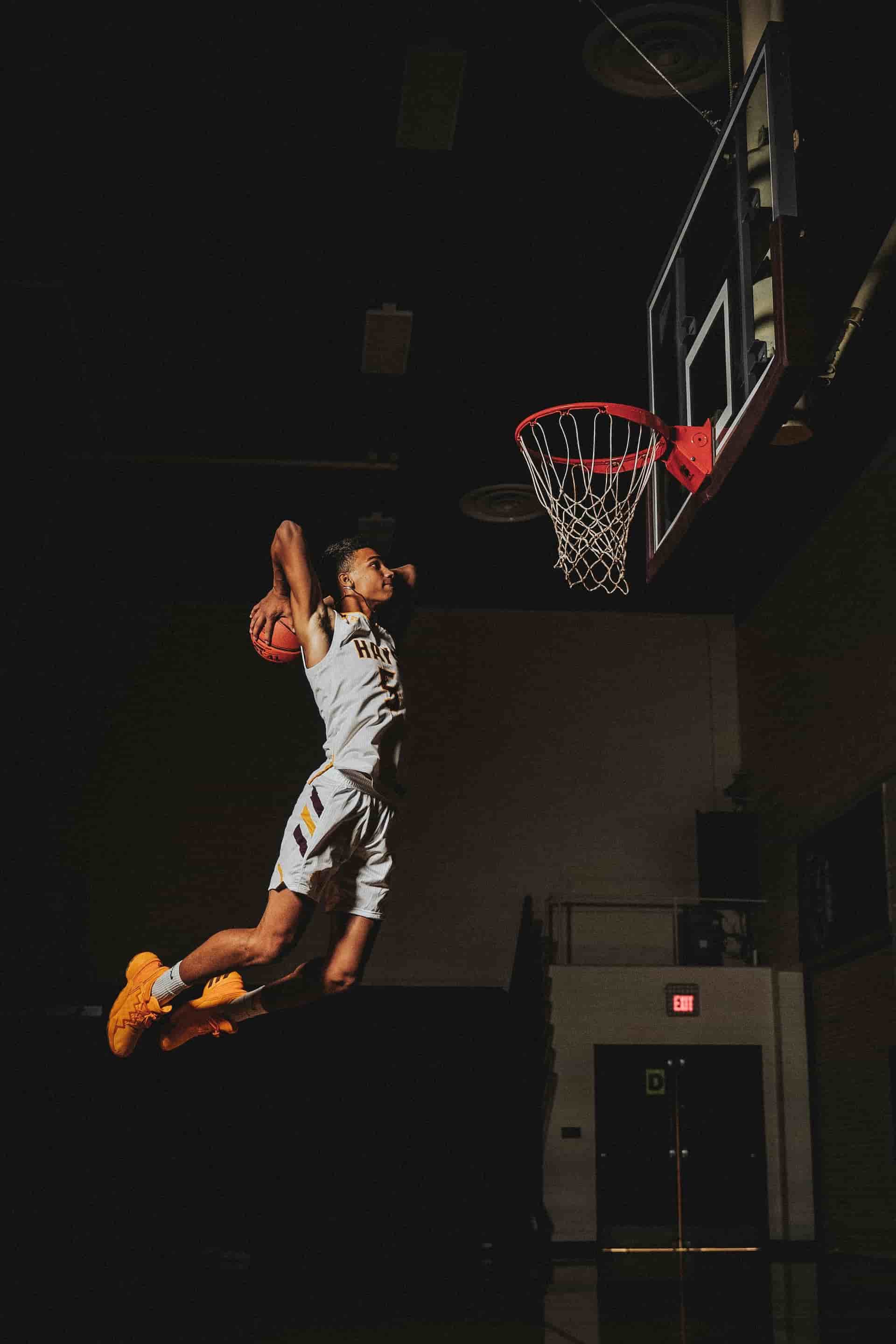

Sports Photography Examples • Basketball player dunking
Sports photography is one way we preserve culture and capture human moments. It’s a vision into victory, loss, pain, euphoria, and all the things in between. Go out into the world and capture these moments so the world won’t forget them.
Related Posts
UP NEXT
Guide to Different Types of Cameras
If you want to be a sports photographer, you’re going to need a camera. Finding the right camera can be difficult and time consuming, but don’t worry, we’ve done the research and compiled a guide so that you can quickly find the best camera for your shooting needs.
Up Next: Different Types of Cameras →
Showcase your vision with elegant shot lists and storyboards.
Create robust and customizable shot lists. Upload images to make storyboards and slideshows.
